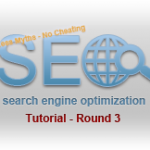The Birth of YouTube
 YouTube was founded in early 2005 by 3 PayPal employees , Chad Hurley, Steve Chen, and Jawed Karim . As another great garage invention it started out when they got frustrated trying to send a video through email.
YouTube was founded in early 2005 by 3 PayPal employees , Chad Hurley, Steve Chen, and Jawed Karim . As another great garage invention it started out when they got frustrated trying to send a video through email.
They saw the opportunity and offered a solution to the problem. After the official launching they secured external funding from Sequoia Capital all of which was used to improve the infrastructure and add needed features. From then on it kept growing, getting bigger and bigger. It was sold to Google 18 months after it’s lunch for the sum of 1.65 billion USD.
It recently surpassed the 4 billion views per day and is currently the third most popular site on the internet (under Google and facebook). It constitutes one of the most powerful components of Google.
Why YouTube Chose Flash
It’s biggest ingredient is flash. A major decision with great effects in the software industry and the “battle of the codecs” . Beside the bad quality of the video it has the – much more important – advantage of availability and flexibility. You can embed or link a video and be sure that the other end will have no problem watching it. Only thing necessary is a web browser and a hyperlink. Back in the old days you had to search through a variety of sources to find the files you needed , download them, find the right codec to play them in something like Windows Media Player, or QuickTime, which you had to have installed in your computer and it was pretty complicated. YouTube offered something much easier. There wasn’t even the need to get registered…
YouTube and Copyright
A major issue for YouTube is copyright rights. Virtually everything of interest on YouTube is copyrighted content. 90% of the videos in YouTube is breaking that rule! Reading YouTube’s copyright tips page you get the idea that anything other than 100% original content is strictly forbidden . Yet there was a “window” out of this that made YouTube what it is today. It’s name is “fair use”. What this says is that you can use content from another source without permission as long as it satisfy the the four factors of fair use . These are
- the purpose of the use
- the nature of the copyrighted work
- the relative amount of the portion used
- the market effect of the use on the copyrighted work
What these rules obligate is that with your video you somehow offer a new interpretation of the data you are using and you only use the content in ways that they are producing something new. A new knowledge sort of speak. Like when you comment part of a show in the news report. Another classic example here is the parody videos. Although the visual content is 100% copy, it is used for entertaining purposes giving a completely different purpose to the original video. So with the banner of fair use the copyrighted content stays up until someone complains. It is only then that it is taken into consideration to be removed.
YouTube is the leading video sharing service on the web from it’s beginning till now. It is a “visual information” database recording everything happening in the world around us. The fact remains though that Google is spending million of dollars to be able to keep up with the amount of video uploaded every minute (that is about an hour long) and it is still no able to bring earnings back. The way it’s going to evolve is only remain to be seen..



